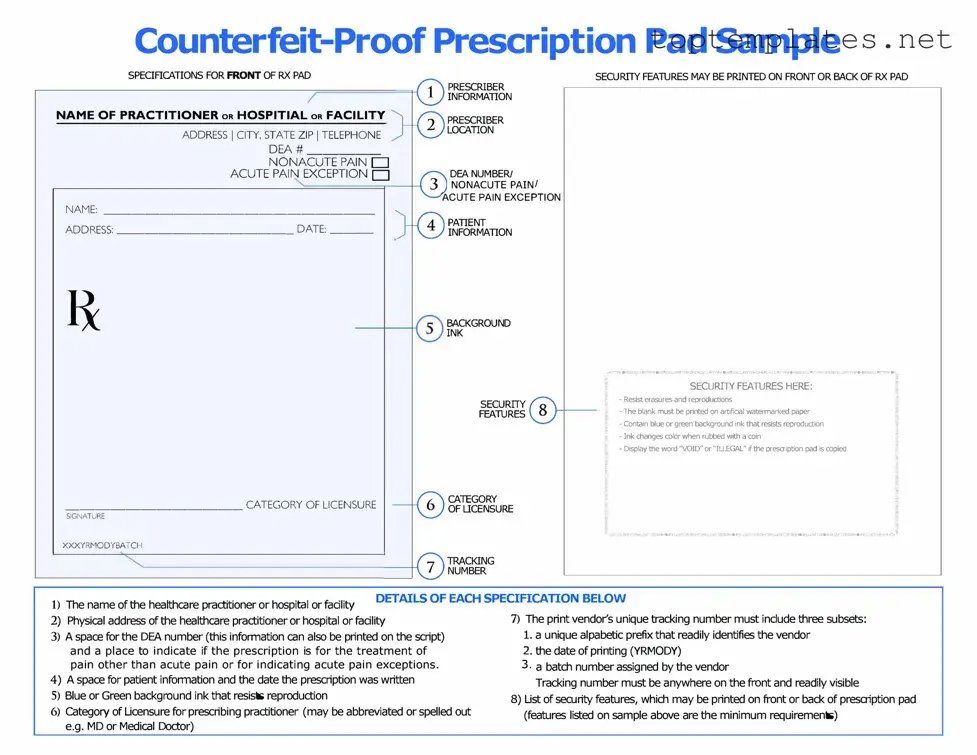What is a Prescription Pad Form?
A Prescription Pad Form is a document used by licensed medical practitioners to prescribe medication to patients. It contains important information including the patient's name, the prescribed medication, dosage, frequency, and duration of the treatment. It may also include special instructions for the pharmacy and patient regarding the medication's administration.
Who is authorized to issue a Prescription Pad Form?
Only licensed healthcare providers, such as doctors, nurse practitioners, and dentists, have the authority to issue a Prescription Pad Form. The provider must be currently licensed in the state where the patient is receiving care, and the prescription must be within the provider's scope of practice.
What information is typically included on a Prescription Pad Form?
Besides the patient's name and medication details, a Prescription Pad Form often includes the prescriber's information, such as their name, professional title, and contact details. The form may also specify the medication's generic or brand name, quantity to dispense, and any refills authorized.
Why is it important for a Prescription Pad Form to be legible?
Legibility is crucial to ensure patient safety. Illegible handwriting on a Prescription Pad Form can lead to errors in medication dispensing, potentially resulting in adverse effects for the patient. Clear and readable prescriptions help pharmacists accurately understand and fulfill the medication order.
Are electronic Prescription Pad Forms acceptable?
Yes, electronic Prescription Pad Forms are widely accepted and, in some cases, preferred. Electronic prescribing (e-prescribing) systems enhance prescription accuracy, reduce medication errors, and streamline the prescription process for both prescribers and pharmacies. Additionally, e-prescribing is an effective tool for combating prescription fraud.
How do Prescription Pad Forms help in preventing prescription drug abuse?
Prescription Pad Forms, especially electronic ones, are designed with features that help prevent unauthorized alterations, forgeries, and duplications. These forms often have security measures in place, such as watermarks and unique identification numbers, to ensure that only legitimate prescriptions are dispensed.
What should a patient do if they lose their Prescription Pad Form?
If a patient loses their Prescription Pad Form, they should contact the prescriber immediately to request a new prescription. The healthcare provider may issue a replacement prescription, potentially with additional safety checks to prevent unauthorized use of the lost prescription.

